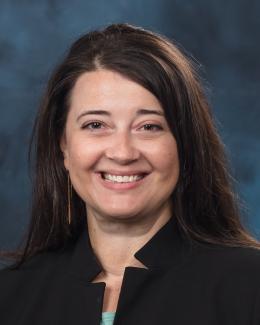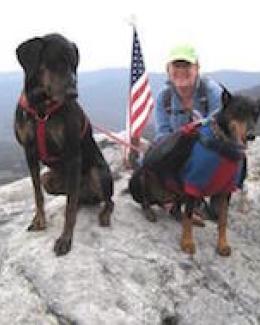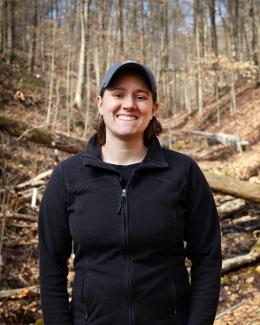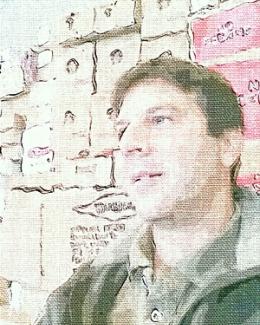Front row: Victoria DiStefano and Dr. Asmeret Asefaw Berhe of DOE toured the SPRUCE experiment with Natalie Griffiths, Melanie Mayes, and Verity Salmon; back row: Dave Weston, Stephen Sebestyen (US Forest Service), Jonathan Stelling, Mark Guilliams, John Latimer (ORNL contractor), Kyle Pearson and Paul Hanson. Credit: Genevieve Martin/ORNL, U.S. Dept. of Energy
The first climate scientist to head the Department of Energy’s Office of Science, Dr. Asmeret Asefaw Berhe, recently visited two ORNL-led field research facilities in Minnesota and Alaska to witness how these critically important projects are informing our understanding of the future climate and its impact on communities.
She toured the Spruce and Peatland Responses Under Changing Environments, or SPRUCE, project in the boreal peatlands of northern Minnesota, an ecosystem where vast stores of belowground carbon in peat bogs have been found to be vulnerable to the effects of rising temperatures. The unique ecosystem manipulation experiment, sponsored by the DOE Office of Science’s Biological and Environmental Research program, consists of 10 large, open-top chambers in the Marcell Experimental Forest where scientists simulate increased temperatures and atmospheric carbon dioxide levels and measure the land’s response over time.
Berhe also toured field sites near Utqiaġvik, Alaska, where scientists from around the nation measure and model changes to the tundra ecosystems underlain by permafrost as part of the ORNL-led DOE Next Generation Ecosystem Experiments Arctic, or NGEE Arctic project.
Berhe was impressed with both SPRUCE and NGEE Arctic, commenting that ORNL has brought the sophistication of the national laboratory complex and its people to the fields of terrestrial ecology and climate science.
“At the SPRUCE experiment in the Marcell Experimental Forest we can see how DOE’s Office of Science has been leading in helping us understand how changing environmental conditions are going to shape our future,” Berhe said.
“Here, scientists collect the data that they need, not just to explain what they're seeing here, but to allow us to model what the global future is likely to look like under changing environmental conditions,” she noted. “These kinds of large-scale climate change experiments are really the only way that we can understand, measure and quantify the response of the key environmental variables to a changing climate, because otherwise we'll be making conjuncture-based predictions not reliably based on data.”
The research “is incredibly important for all of us, as these are the environments that human communities depend on for our livelihoods,” Berhe said. “Being at SPRUCE makes it clear why the Office of Science invests a lot of resources to maintain these experiments that allow us to draw critical consultations about the climate future that we all have to face going forward.”
“Because of DOE’s sustained investment in the large-scale SPRUCE experiment, we’ve been able to study whole ecosystem warming across a range of temperatures that can’t be extrapolated from historical data,” said Paul Hanson, ORNL Corporate Fellow and SPRUCE project coordinator. “In doing so, we obtain quantitative evidence that carbon losses will be anticipated for rapidly changing peatland systems in the future.”
In Alaska, Berhe met with representatives of Native communities on the frontlines of climate change. She toured remote field sites where DOE scientists have been working in close cooperation with local communities to carefully gather information about how the Arctic environment is rapidly changing, to inform large-scale predictive simulations of the Earth’s systems.
“The Arctic is warming at 3-4 times the global rate. It is thus a crucial place to study and to bring results to those living and working in the Arctic as changing temperatures impact their livelihoods, culture and homeland,” Berhe said.
“Alaskan Native communities have been gracious in letting us learn from the land that they have stewarded since time immemorial,” said ORNL’s Colleen Iversen, director of NGEE Arctic. “It is important and increasingly urgent to understand the rapid pace of change in the Arctic so we can better predict the future for the folks who live here and across the world.”
NGEE Arctic scientists are also working at field sites to the south in the Nome area on Alaska’s Seward Peninsula to better understand changes to the tundra environment.
It is the mission of the Department of Energy, Iversen said, to understand the consequences of energy choices that we make as a society. “Some of those energy choices will lead to different climate futures for society. And so we want to understand how the rapid pace of climate change in the Arctic tundra is impacting the rest of the world so we can make more informed decisions as a society about what kind of future we might want.”
A compilation video of Berhe’s journey to Minnesota and Alaska can be viewed here.
UT-Battelle manages ORNL for the Department of Energy’s Office of Science, the single largest supporter of basic research in the physical sciences in the United States. The Office of Science is working to address some of the most pressing challenges of our time. For more information, please visit energy.gov/science. —Stephanie Seay and Kim Askey






